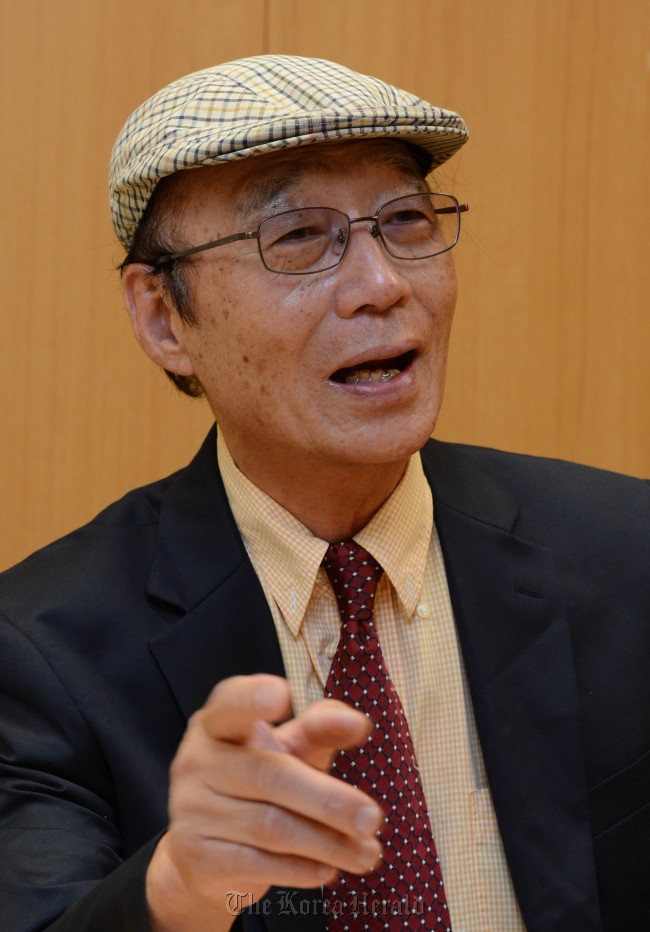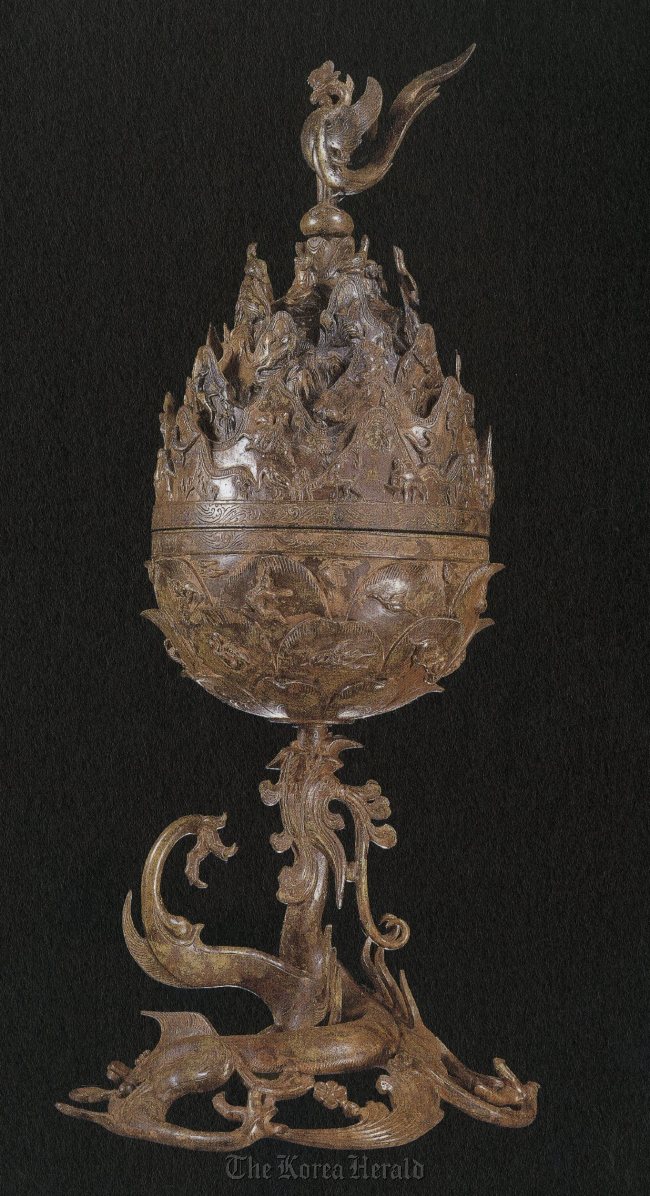Archeologist Im Hyo-jai speaks on his findings of Buyeo artifacts
Most Koreans think of the wall paintings of Goguryeo tombs and the splendid gold crowns worn by the Silla royals when asked to name some of the most famous relics of Korea’s ancient three kingdoms period (B.C. 37 ― A.D. 668)
Unlike the ones of Goguryeo (B.C. 37 ― A.D. 668) and Silla (B.C. 57 ― A.D. 935), relics of Baekje (B.C. 18 ― A.D. 660) are generally unknown to the public. For many, it’s hard to think of the iconic artifact of the ancient state ― which occupied today’s Chungcheong and Jeolla provinces.
Yet archaeologist Im Hyo-jai, who serves as the president of the Society for East Asian Archaeology’s (SEAA) Korea office, says Baekje relics ― mostly found in Buyeo of South Chungcheong Province and Buan of North Jeolla Province ― are beginning to be considered important in the international archaeology community.
“Relics of Goguryeo are ambitious, while the ones of Silla are splendid and exuberant,” Im, who attended the SEAA’s 5th World Conference from June 6 to 10 in Fukuoka, Japan, told The Korea Herald.
Most Koreans think of the wall paintings of Goguryeo tombs and the splendid gold crowns worn by the Silla royals when asked to name some of the most famous relics of Korea’s ancient three kingdoms period (B.C. 37 ― A.D. 668)
Unlike the ones of Goguryeo (B.C. 37 ― A.D. 668) and Silla (B.C. 57 ― A.D. 935), relics of Baekje (B.C. 18 ― A.D. 660) are generally unknown to the public. For many, it’s hard to think of the iconic artifact of the ancient state ― which occupied today’s Chungcheong and Jeolla provinces.
Yet archaeologist Im Hyo-jai, who serves as the president of the Society for East Asian Archaeology’s (SEAA) Korea office, says Baekje relics ― mostly found in Buyeo of South Chungcheong Province and Buan of North Jeolla Province ― are beginning to be considered important in the international archaeology community.
“Relics of Goguryeo are ambitious, while the ones of Silla are splendid and exuberant,” Im, who attended the SEAA’s 5th World Conference from June 6 to 10 in Fukuoka, Japan, told The Korea Herald.

“But the ones of Baekje are very serene and soft. Such qualities are especially notable in its Buddhist relics, such as the famous gold gilt bronze incense burners and the Buddha statues.”
During the world conference in Fukuoka this month, Im gave a presentation on his thesis which explored the political, social and religious significance of the Jungmak-dong site, an ancient ritual site on the southwestern coast of Buan, North Jeolla Province, and its relics. The site was first discovered in 1992 by Jeonju National Museum, and its discovered relics include a variety of stoneware, bird and horse-shaped ornaments, and a cup used by Baekje’s ancient shamans.
According to Im, the site in Buan is one of the only two ancient ritual sites in Asia, along with the one in Okinoshima Island in Japan’s Munakata region.
“It was my first time to present my academic findings on the Jungmak-dong site in an international conference,” said Im. “The responses I received were generally positive and enthusiastic. Many scholars, including renowned British scholar Gina Barnes, stressed that the two sites ― Jungmak-dong and Okinoshima ― must be researched together in future.”

Im said it is also important for archaeologists to cooperate with folklorists when studying the Baekje relics found in Buyeo and Buan.
“What archaeologists study are the discovered relics, such as the broken pieces of jars that were used during the ancient divine rituals,” said Im.
“We find out how old the relics are, and what they are made of. But it’s hard for us to find out how they were used in what cultural, social or spiritual context. And in order to find out the culture that produced these relics, we need to work with folklorists. For example, we can’t just say the ancient shamans held their rituals atop rocks and broke their jars as a spiritual gesture at the end of their ceremonies. We need to be able to explain the reasons behind these things.”
Korea is planning to submit an official application for the Jungmak-dong site and its relics, along with other Baekje artifacts to be added on the UNESCO World Heritage List by the year 2016.
By Claire Lee (dyc@heraldcorp.com)


![[AtoZ into Korean mind] Humor in Korea: Navigating the line between what's funny and not](http://res.heraldm.com/phpwas/restmb_idxmake.php?idx=644&simg=/content/image/2024/04/22/20240422050642_0.jpg&u=)


![[Exclusive] Korean military set to ban iPhones over 'security' concerns](http://res.heraldm.com/phpwas/restmb_idxmake.php?idx=644&simg=/content/image/2024/04/23/20240423050599_0.jpg&u=20240423183955)
![[Herald Interview] Why Toss invited hackers to penetrate its system](http://res.heraldm.com/phpwas/restmb_idxmake.php?idx=644&simg=/content/image/2024/04/22/20240422050569_0.jpg&u=20240422150649)
![[Graphic News] 77% of young Koreans still financially dependent](http://res.heraldm.com/phpwas/restmb_idxmake.php?idx=644&simg=/content/image/2024/04/22/20240422050762_0.gif&u=)






![[Exclusive] Korean military to ban iPhones over security issues](http://res.heraldm.com/phpwas/restmb_idxmake.php?idx=652&simg=/content/image/2024/04/23/20240423050599_0.jpg&u=20240423183955)



![[Today’s K-pop] Ateez confirms US tour details](http://res.heraldm.com/phpwas/restmb_idxmake.php?idx=642&simg=/content/image/2024/04/23/20240423050700_0.jpg&u=)